UruguayMapDecember 31, 2008 — January 2, 2009 Behind the completely unflattering name “Uruguay” lies a quiet, untroubled, well-developed, resort-filled country. Had it been given a different name, its fate would have turned out differently. Admittedly, I think all Latin American countries suffer from a bad image—they appear remote and underdeveloped. All because of our Northern Hemisphere snobbery.
There’s nothing super-modern in Uruguay because no one cares about that here. Everybody prefers as little change as possible. This is why most of the cars are The word best used to describe the Uruguayan temperament is tranquilo. Chill and relaxed. MontevideoMap
The very first thing I saw in Uruguay was the minibus driver’s maté. Everyone calls maté a tea, but it’s not tea, it’s actually shavings of some sort from the maté tree. Every person carries around a spoon-straw, a distinctively-shaped mug and a thermos—they just keep adding water, because the drink hardly loses its taste.  Uruguayans are completely unreligious. I was expecting a giant Jesus with the big Latin American heart on every corner, but saw nothing of the sort. Christmas goes by practically unnoticed here, but New Year’s is a serious holiday. The city was therefore completely deserted. 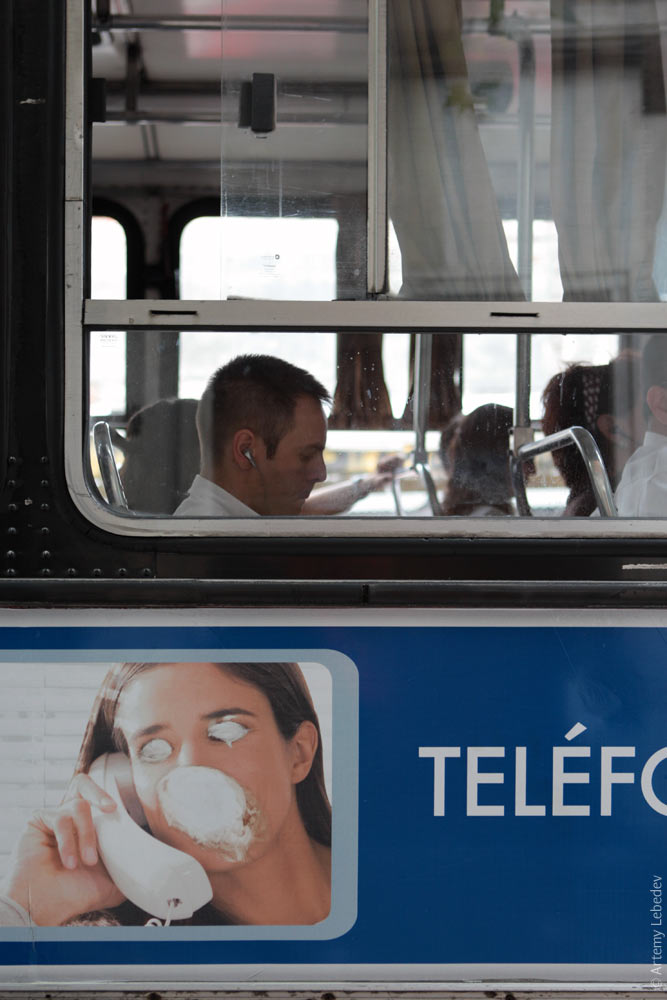 There were virtually no cars in the streets.  Only one hot dog stand was open. 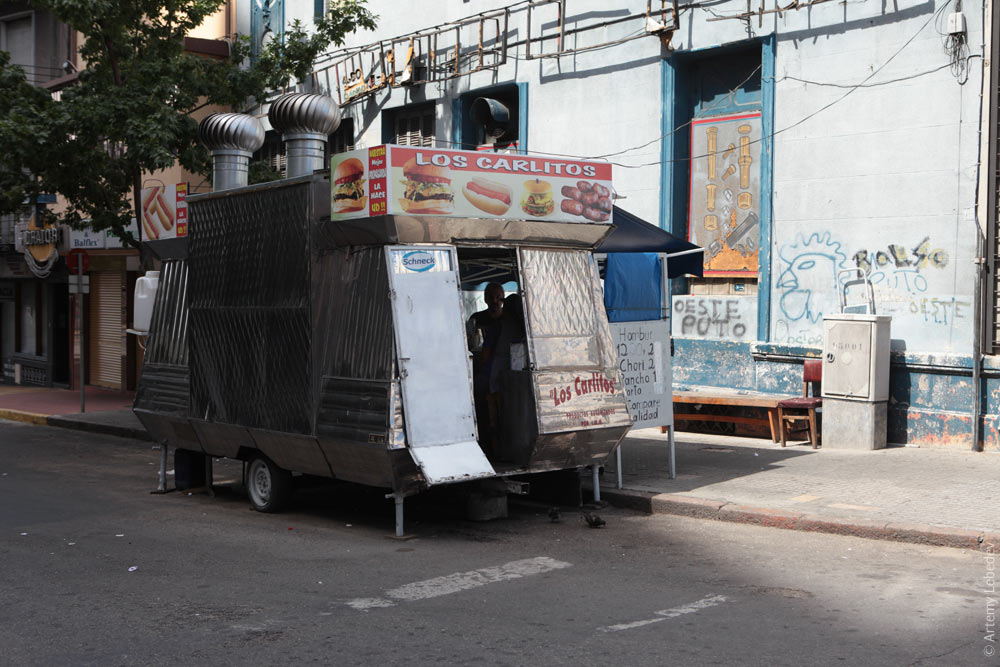 These stands all have the exact same design here—this one:  All the phone booths look like this: 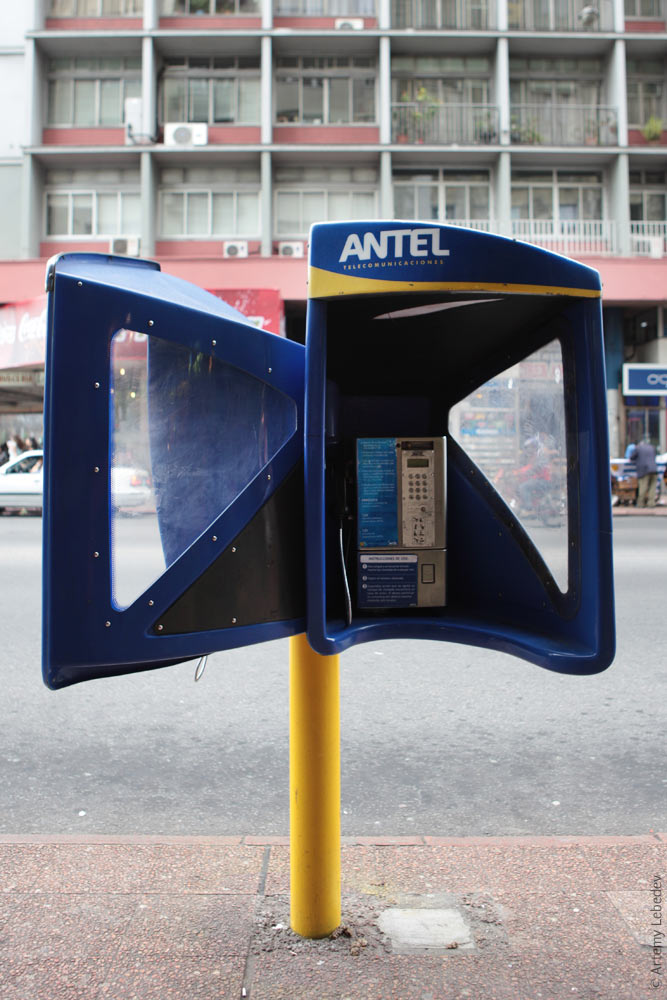 All the guard booths look like this: 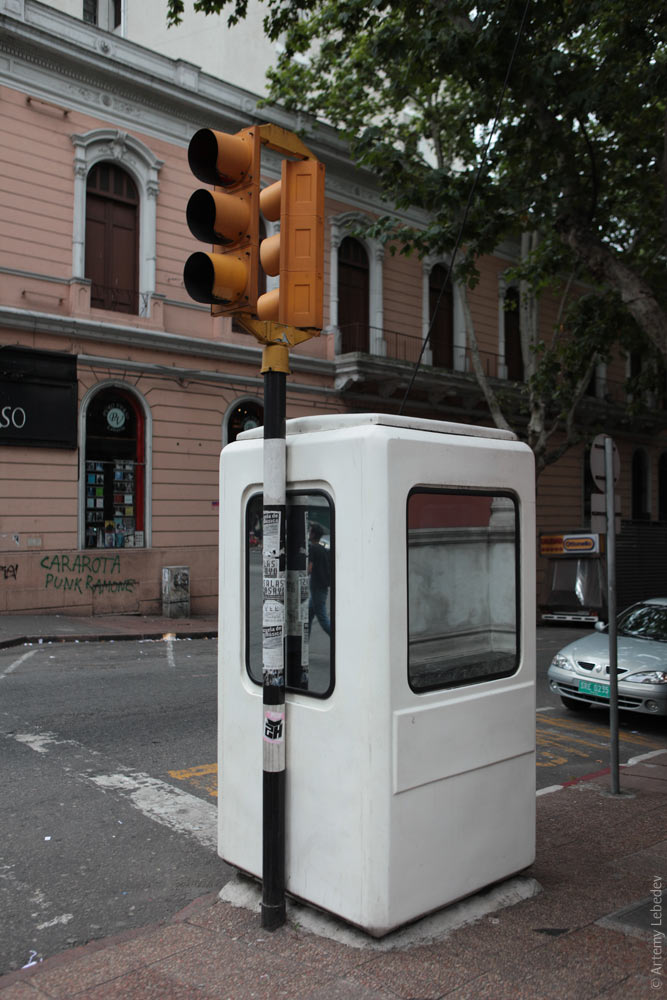 Intersections have street signs only on one corner, and they all look like this (the arrows indicate traffic direction): 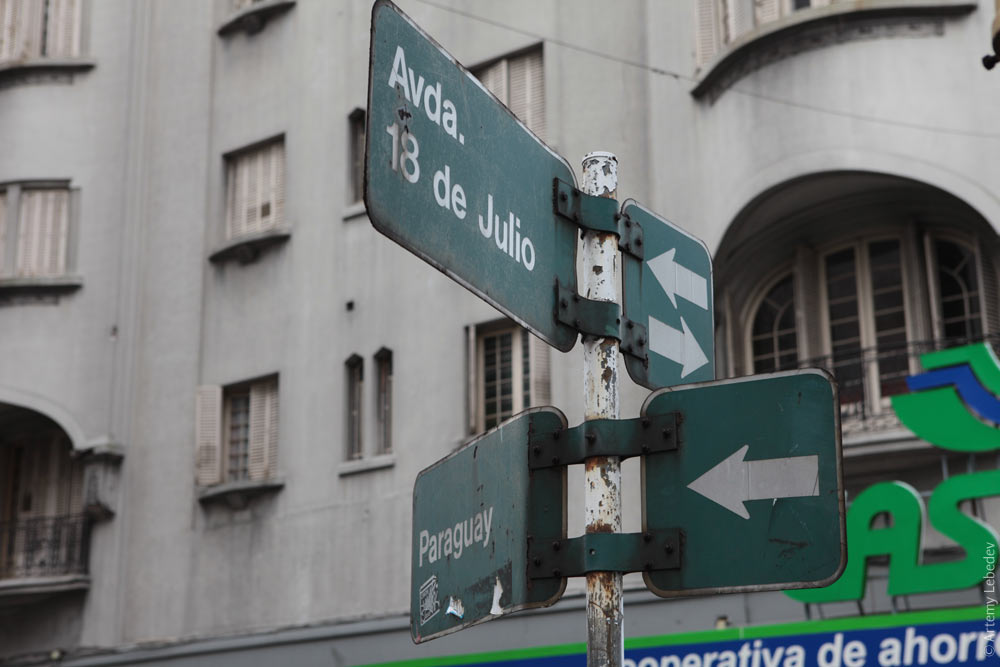 All the bus route signs at bus stops look like this: 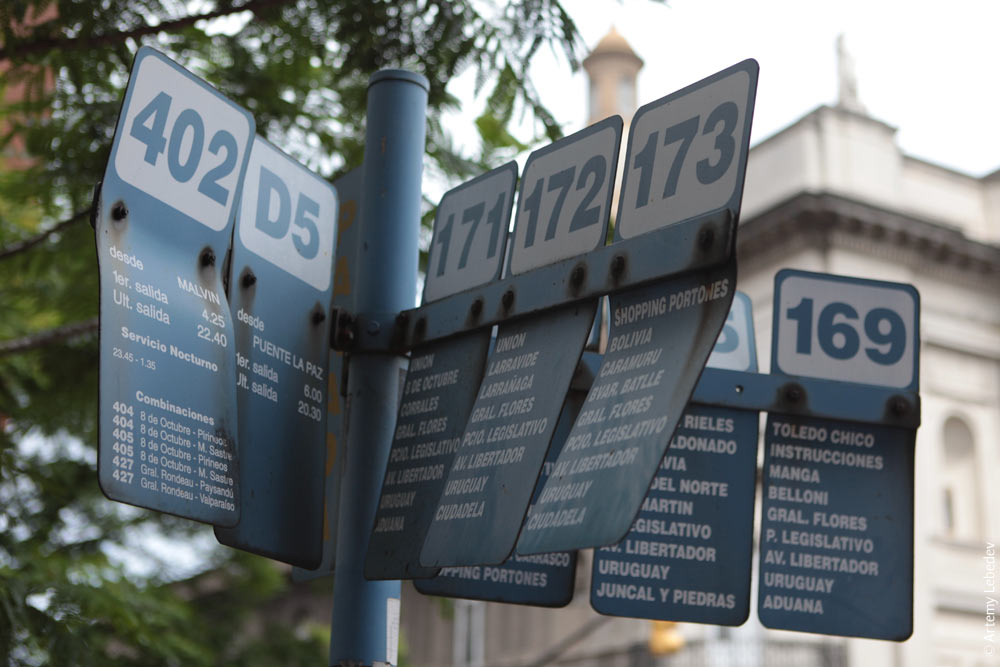 The scaffolding’s brick-catching canopies remind me of Rome or Dar es Salaam. 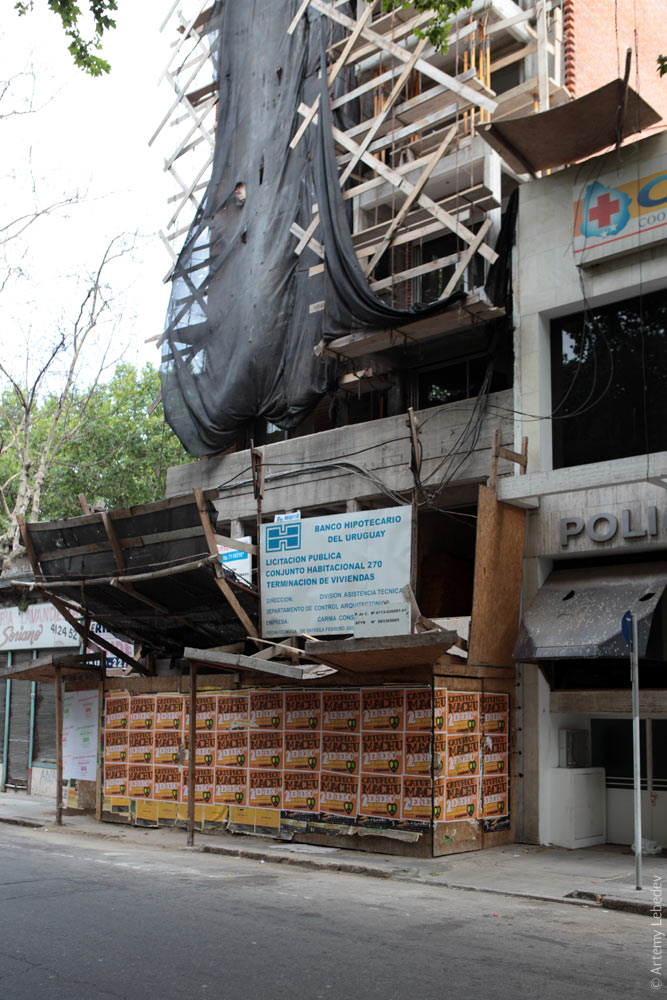 Half the traffic signs resemble American ones, the rest—European ones. This is a local hunched pedestrian on an American yellow diamond: 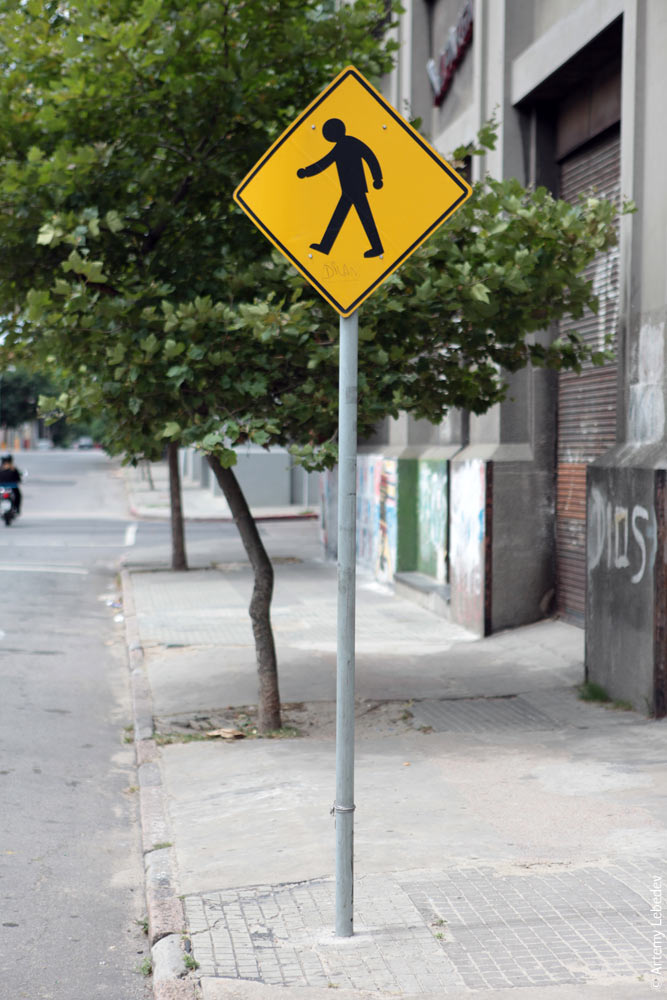 The permissive ring is blue here for some reason (in Canada, it’s green, which makes more sense). 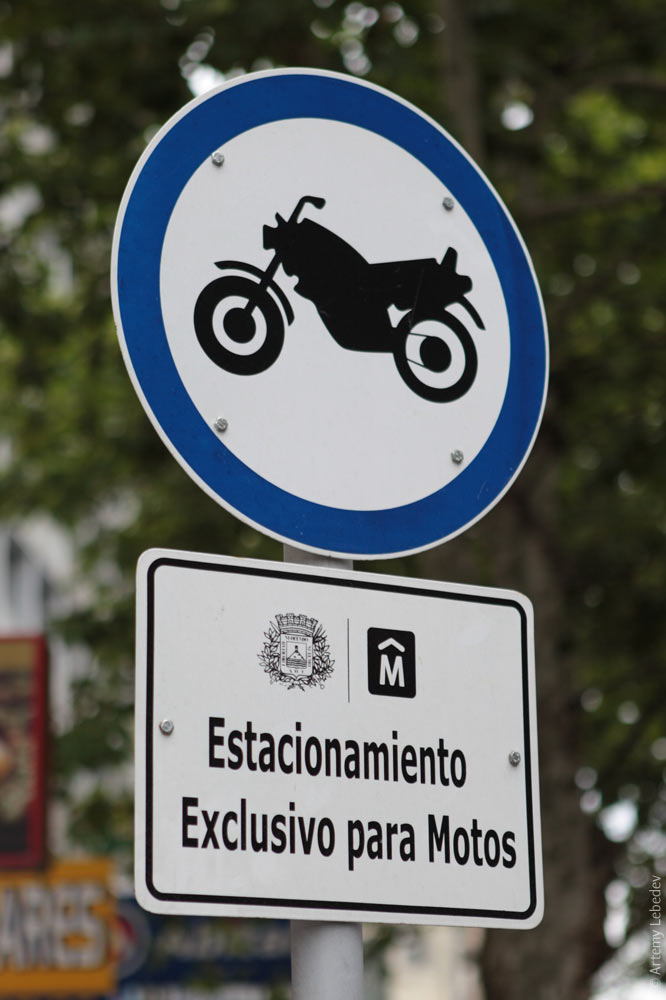 A purely Uruguayan sign: commercial vehicle loading and unloading. This is a guy unloading a box from a pickup truck. 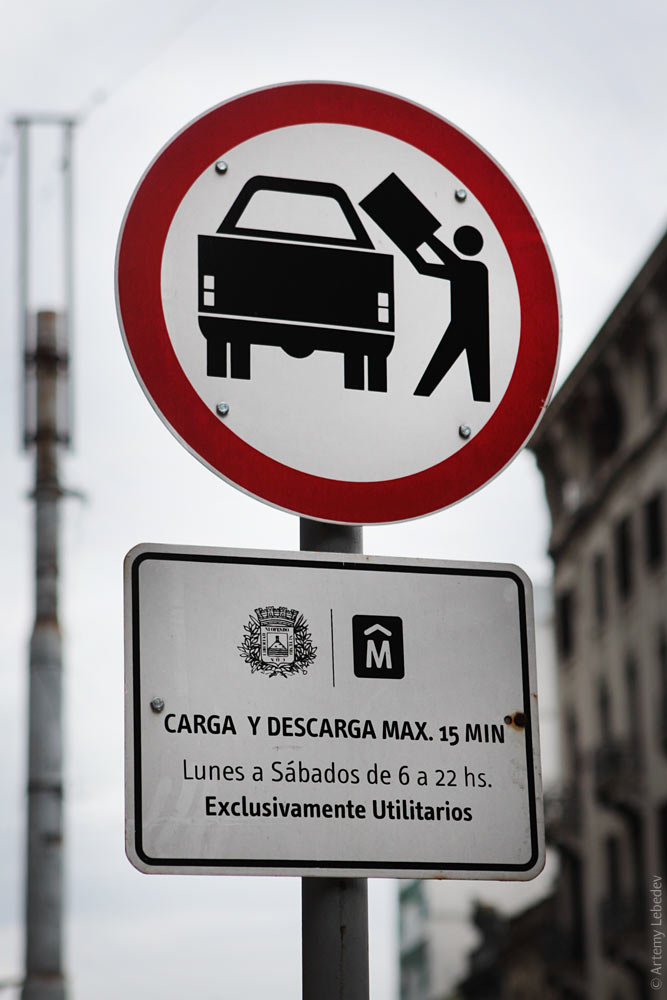 Half the streets in Montevideo were littered with paper.  On closer inspection, all the papers turned out to be flip calendar sheets. It seems there’s a tradition of throwing last year’s calendars out of office windows before the New Year. And there’s no shortage of calendars here. 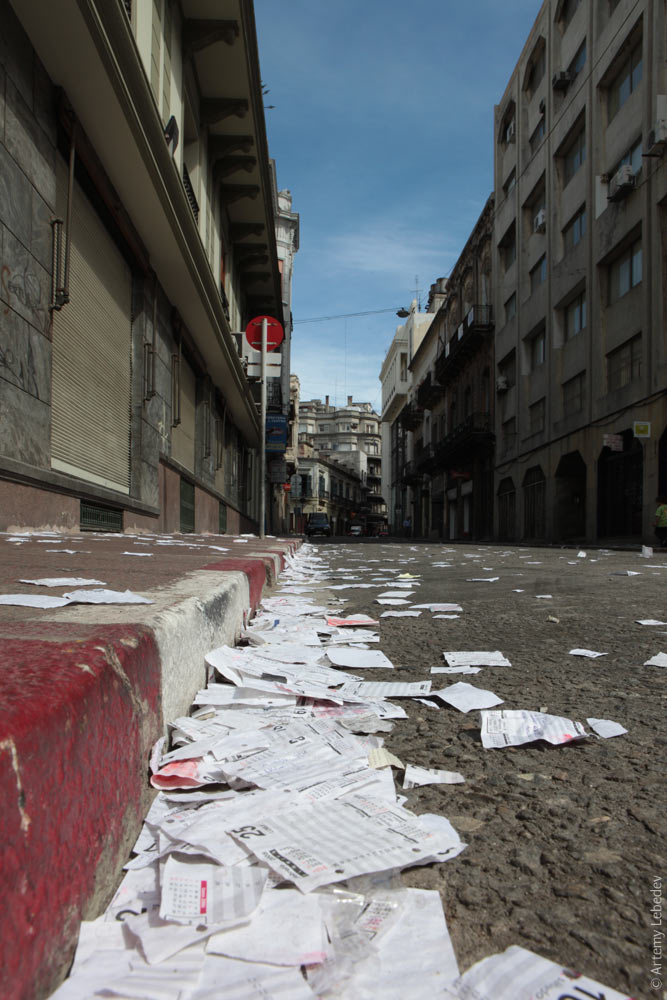 The city is completely civilized, yet you can encounter people barbecuing right on the side of the road, next to the sidewalk. I saw the exact same thing a week later in Buenos Aires, an even more developed city. Here’s a man cooking some chicken: 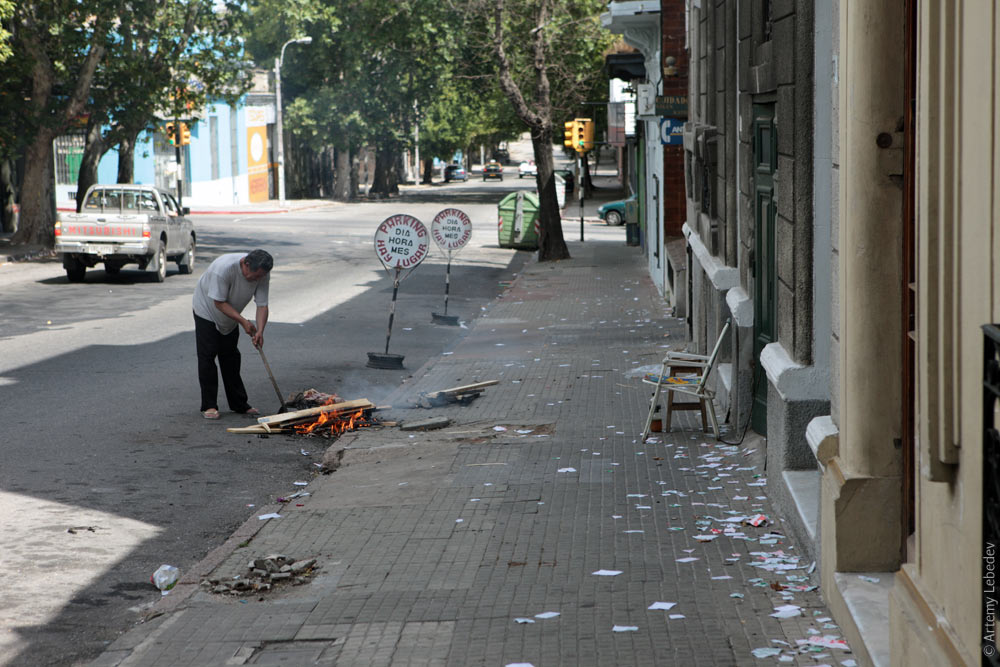 “Uruguayan TV for Uruguayan actors,” proclaim the posters next to the homeless guy. An enameled oval plaque—a standard, like in Italy—hangs over the entrance. 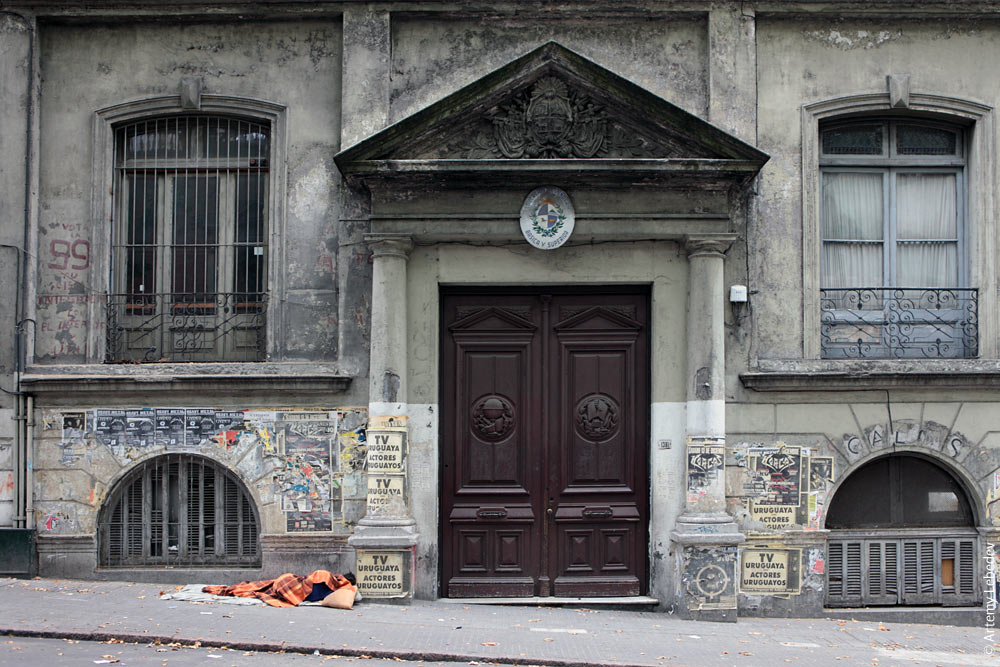 The tree grates are unexpectedly elegant. The style is reminiscent of 1930s America. 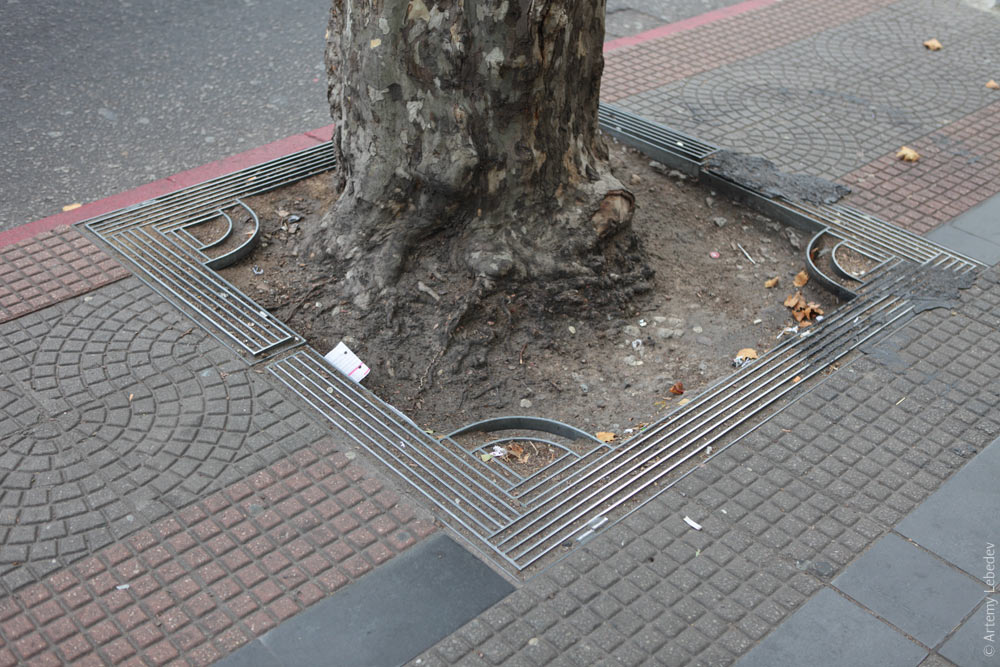 When a building is boarded up until better times, all the ground floor windows and doorways are sealed with concrete blocks or brick. 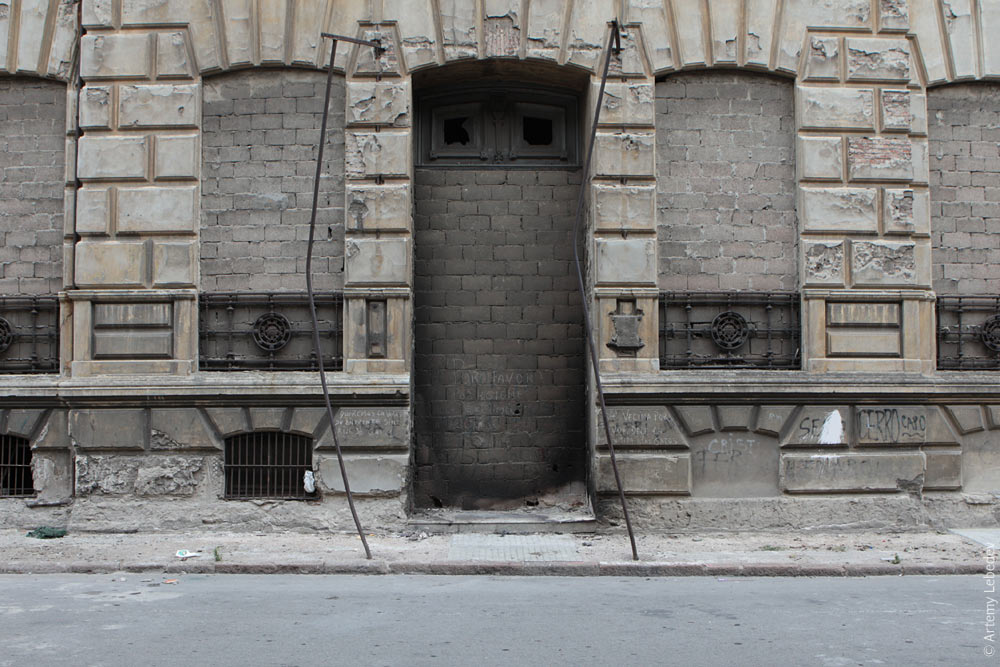 No matter how beautiful the building originally was. 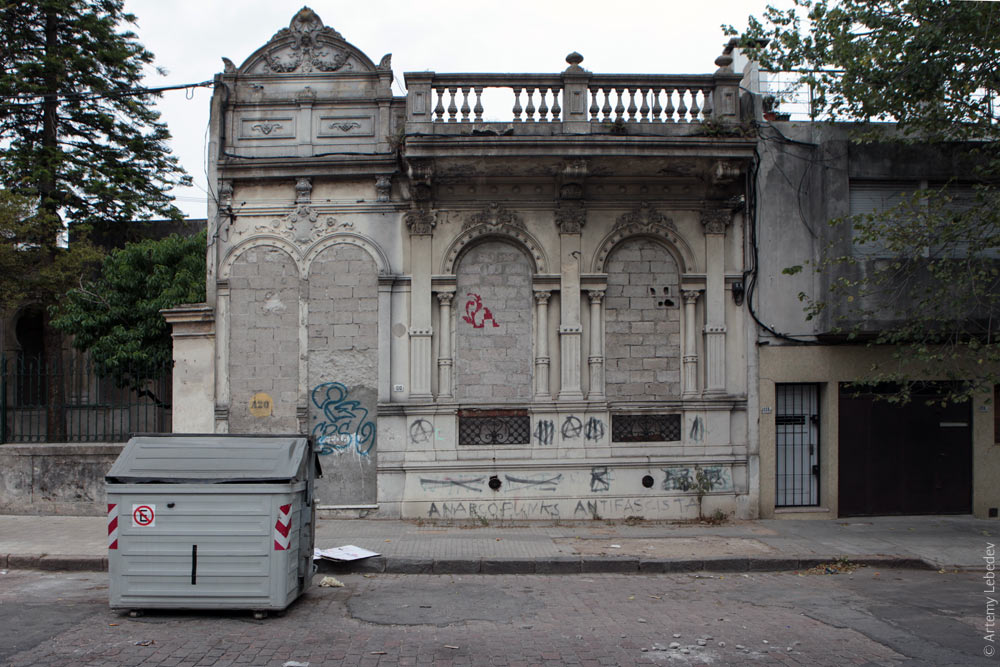 Part of the local color is clusters of doors located right next to one another. 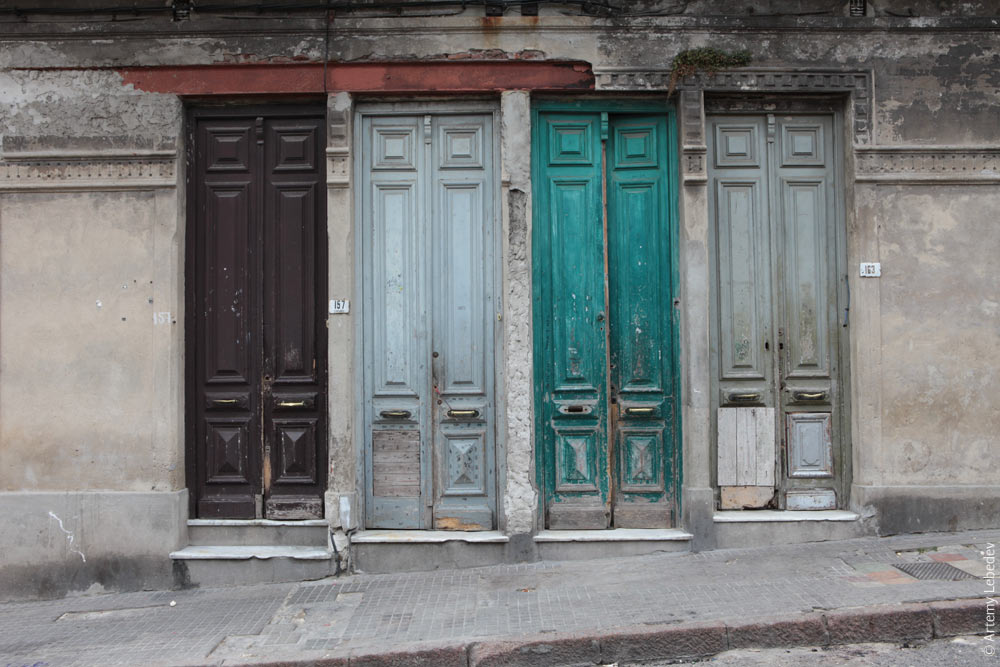 Not all garbage collectors are entitled to a garbage truck. A truck costs money and guzzles gas, so horses are used for bottle and can collection instead. Collectors fish the valuable trash out of dumpsters and throw it into the bags on their cart. 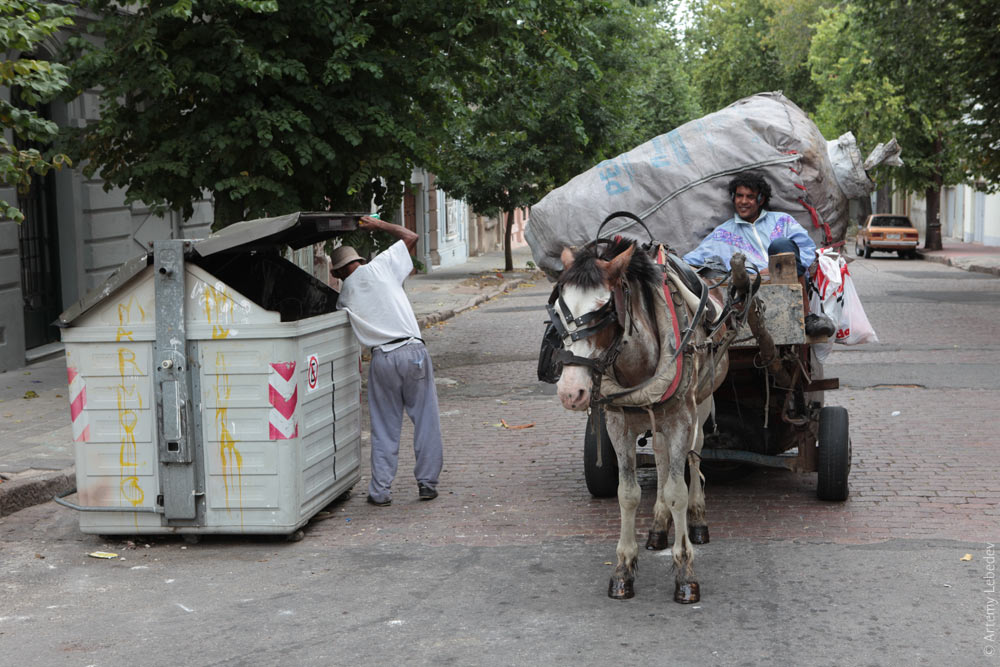 On one street, I came upon an absolutely unique structure, which the architect evidently envisioned as part of some ideal building. It’s a garbage disposal without a chute—the idea is that you throw garbage bags in from the sidewalk side, and garbage collectors pick them up from the street side. The difference between vision and reality is fully evident here. An excellent lesson for any designer who decides to create something extra-beautiful. 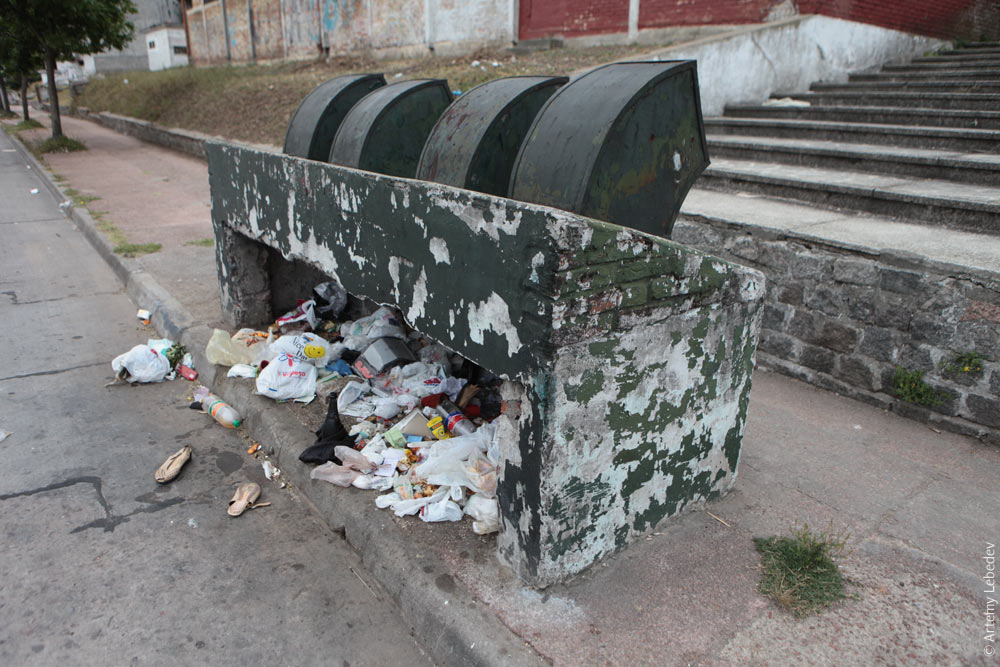 They’re beginning to clamp down on tobacco advertising here: in half the stores, cigarettes are now kept in opaque coffers above the cash register. 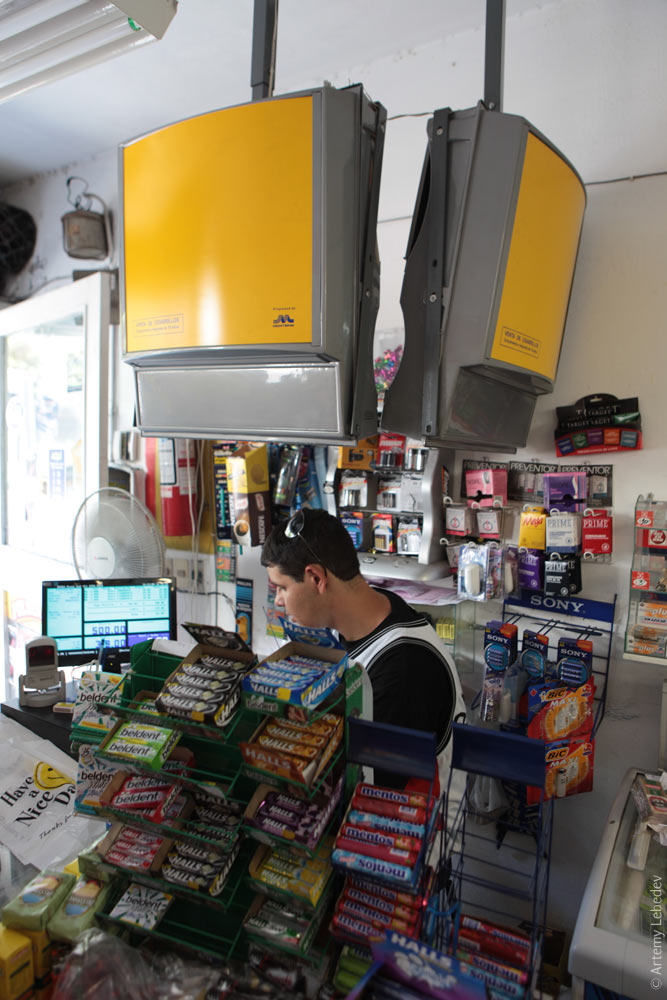 The country is holding elections soon. They have an astounding system: everyone—the president, deputies, senators—is elected at the same time. And everyone can assign themselves any number, which is then promoted on lampposts. Practically all the lampposts are plastered with campaign posters.  Uruguay has a completely unique power line suspension system. 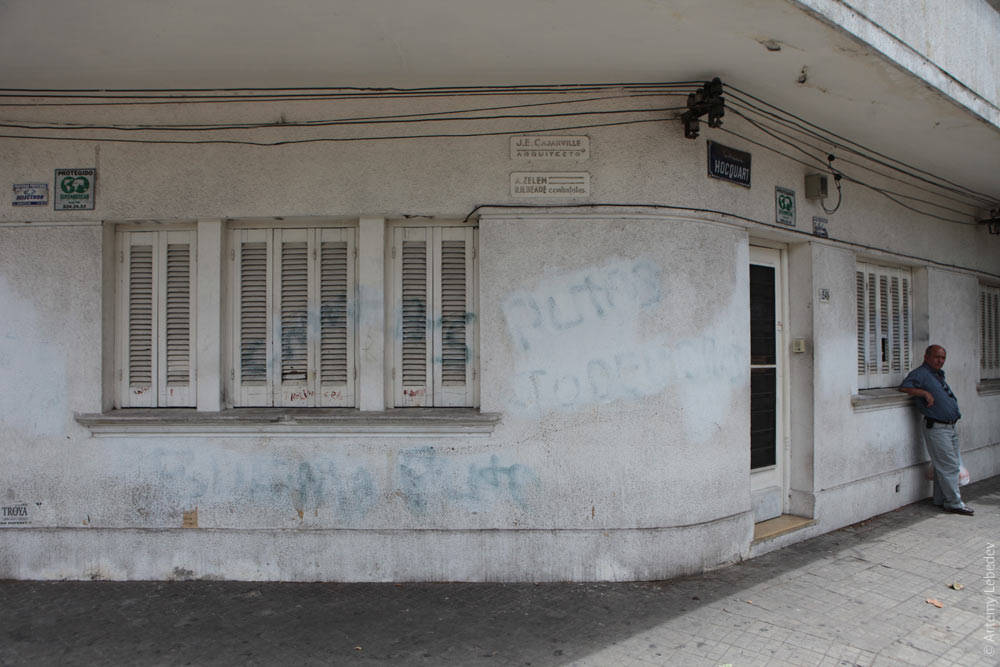 The insulators are attached directly to building walls. Poles appear only in places where there are no structures. 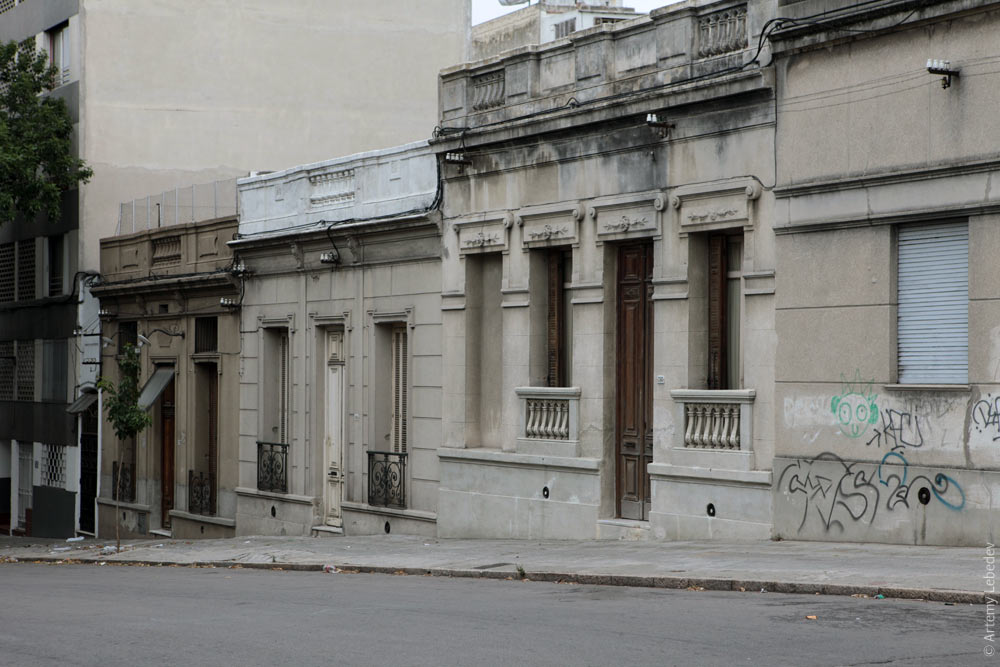 You can also clearly see a round opening under every window. This is a convector grille. Such grilles can be found in all old houses without central heating (see also Budapest). 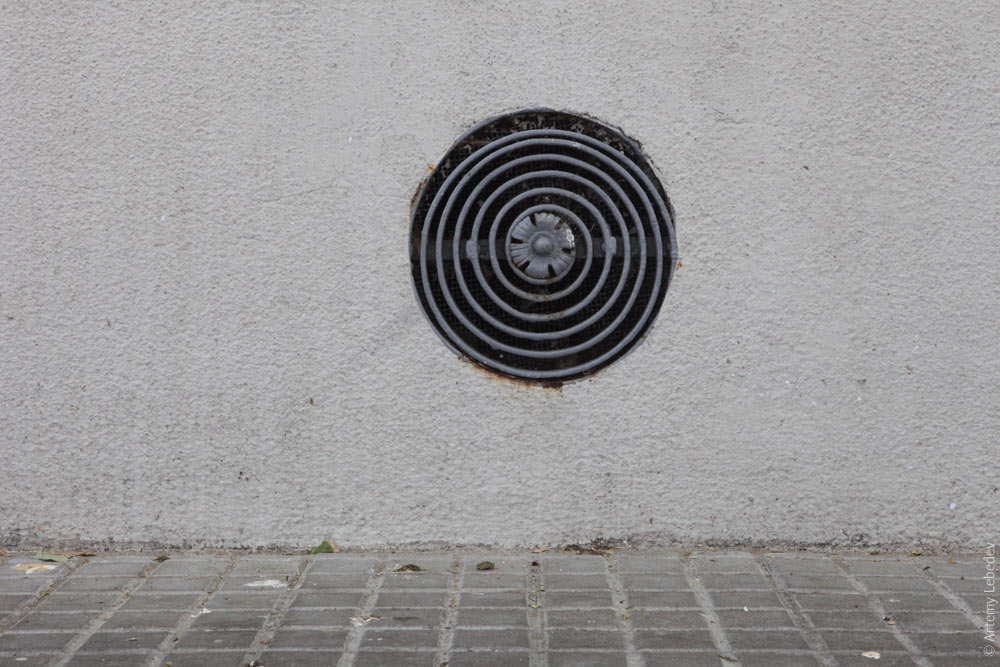 Uruguay is a socialist country. But almost all the buildings here were designed with the assumption that every household would have servants. All multi-story buildings have a separate elevator for housekeepers, as well as separate quarters with a separate bathroom for them in every apartment. The housekeeper takes the elevator up to her part of the apartment and does all the housework. The division is clearly visible on this photo. On the left, the buildings are facing us with their service side, on the right—with their front side. 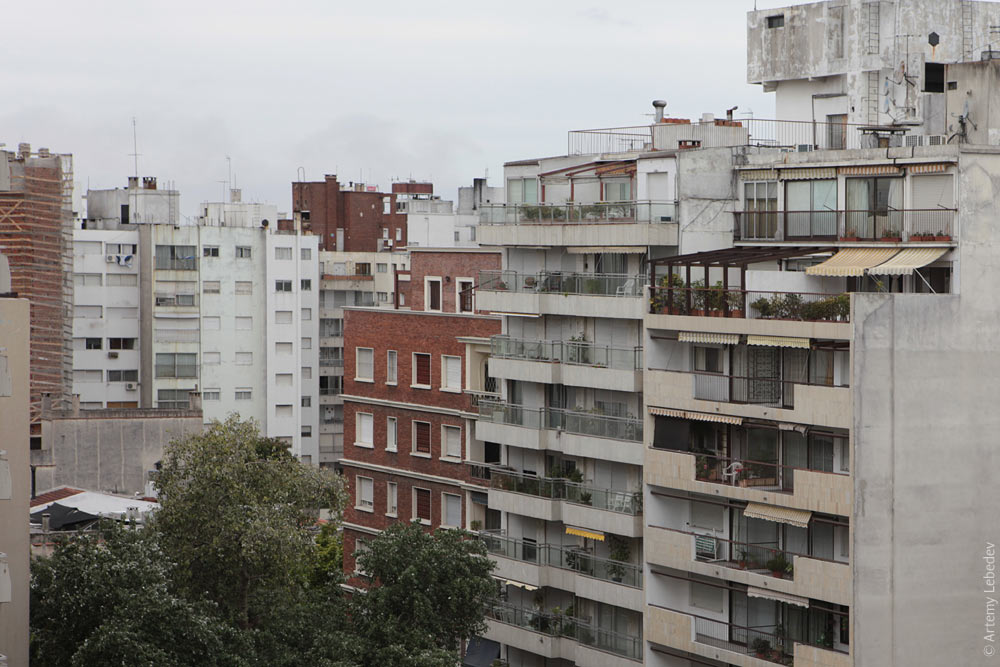 The fact that half the buildings have a special area for grilling built into the balcony isn’t the least bit surprising at this point. 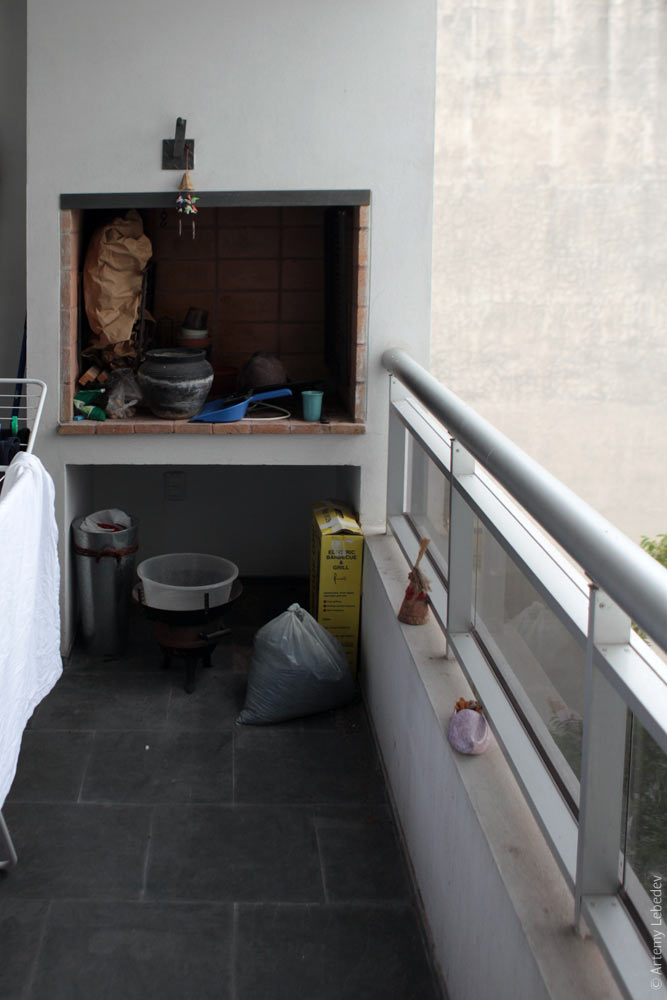 The city was completely empty and still. But suddenly, the sound of drums appeared in the distance. 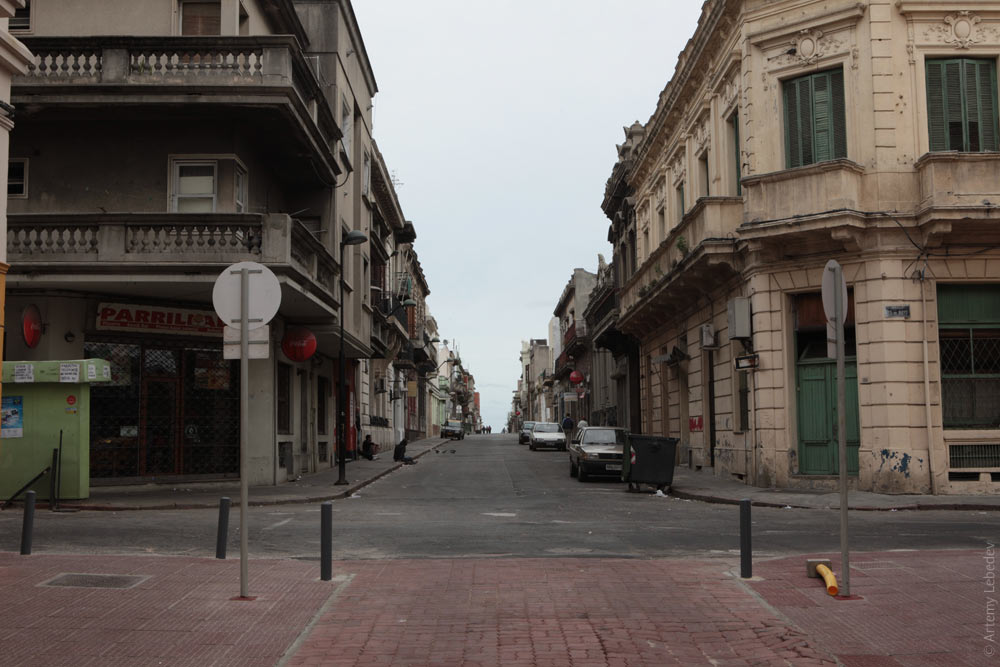 Inebriated Uruguayans were posing for photos with their arms around the tourist police. 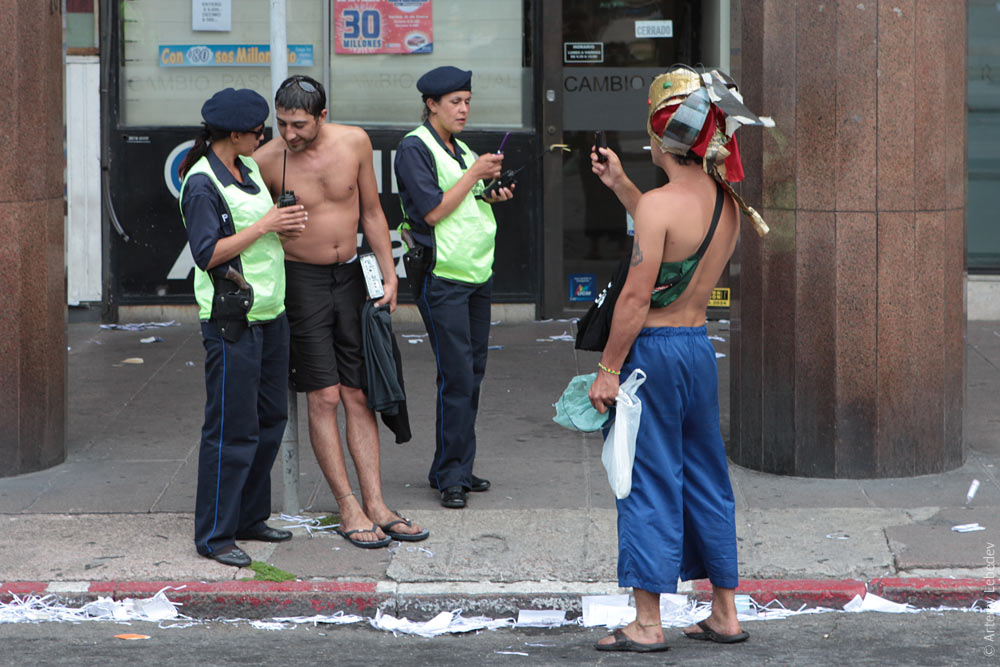 Some were taking advantage of the opportunity to grab on to dancing girls. 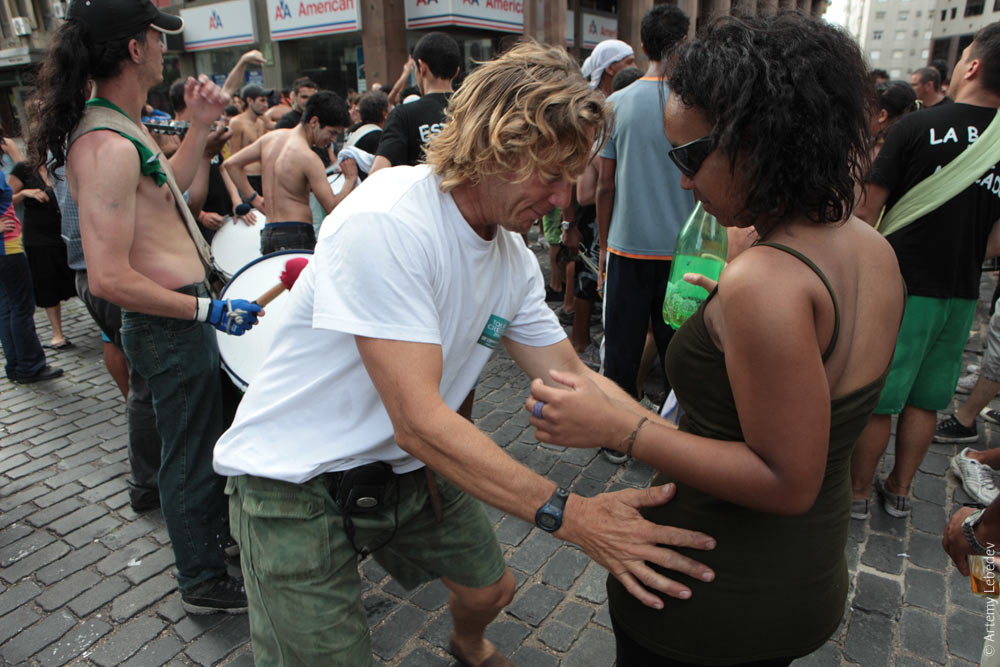 One street was completely blocked off and given over to those who wanted to dance and douse themselves with water, cider, or beer. 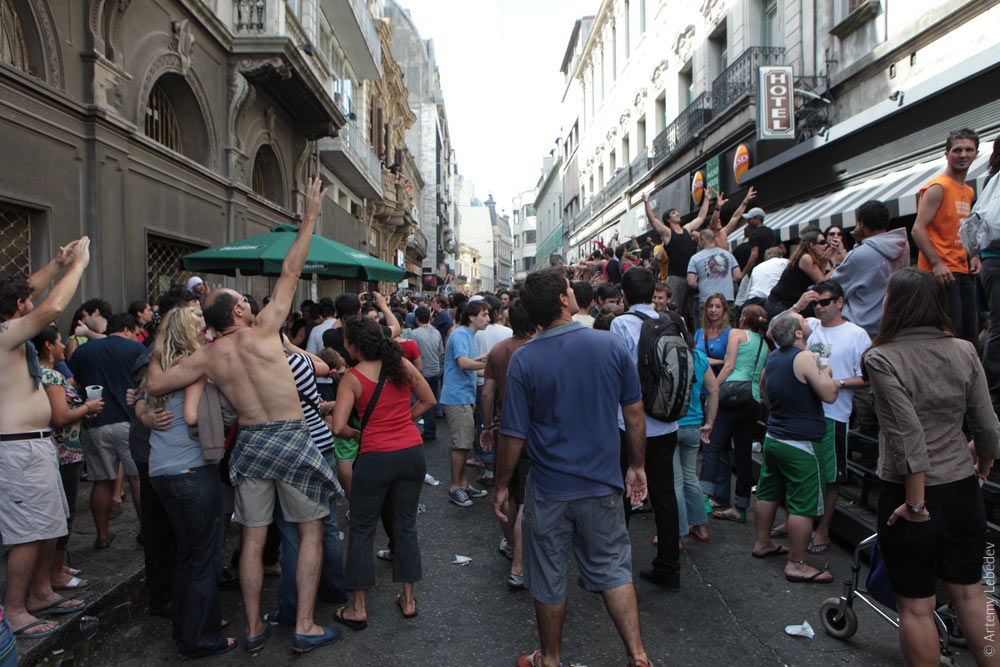 Apparently, it was by sheer miracle that I managed to make it out of there dry and with my new camera intact. Everyone tried to warn me, but I ignored them. Some were less lucky. Although this guy actually wanted to get wet. 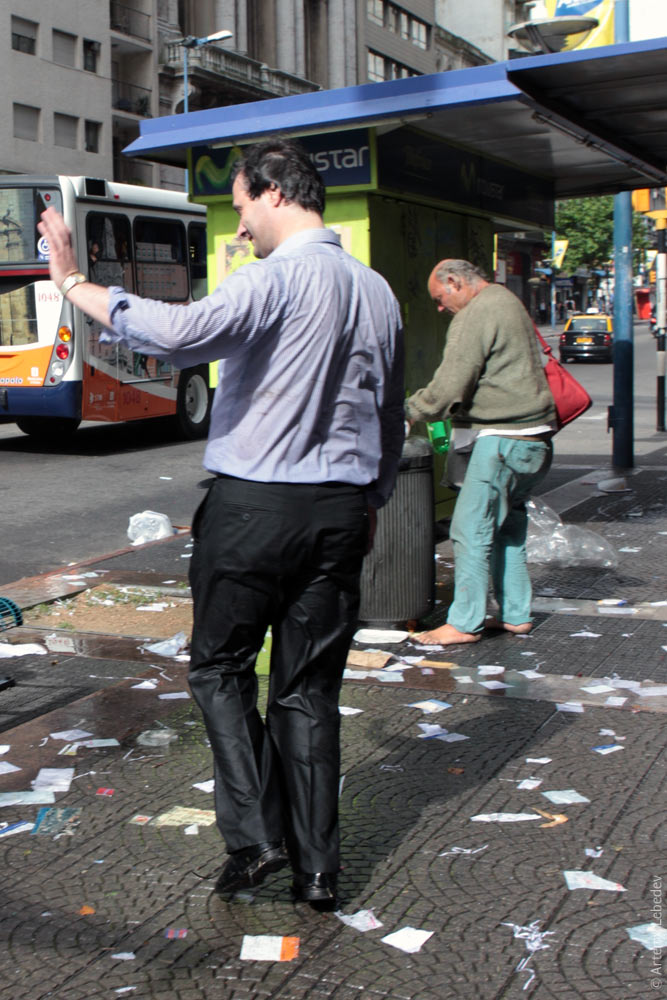 The New Year was approaching. A drunk sat slouching on one of the central squares. 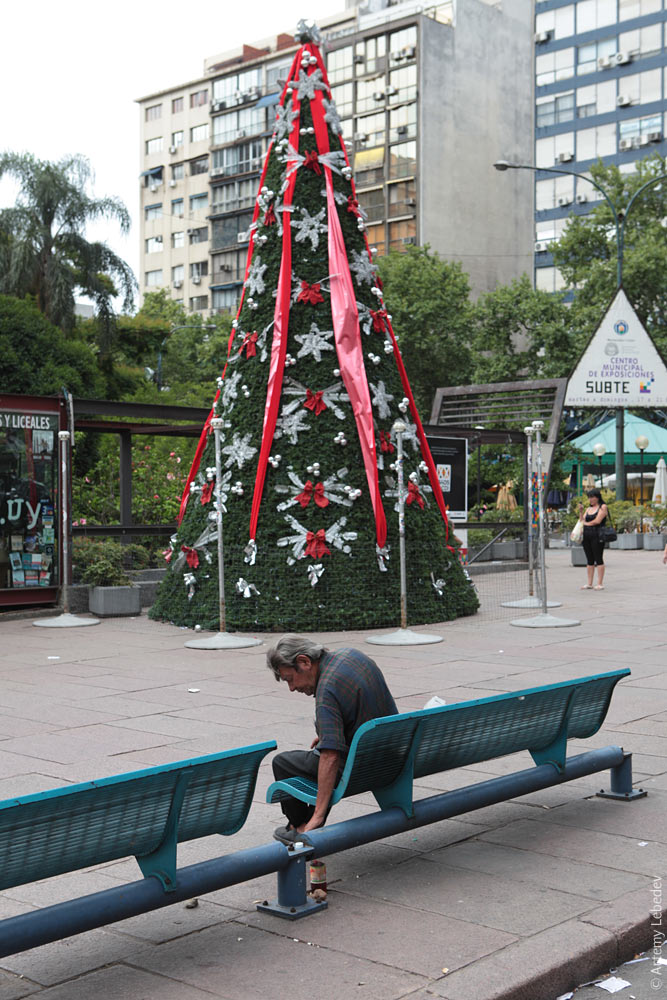 It turned out that I had been mistaking the local river for the ocean. The water here isn’t salty, yet you can’t see the horizon. It joins the ocean not too far away. 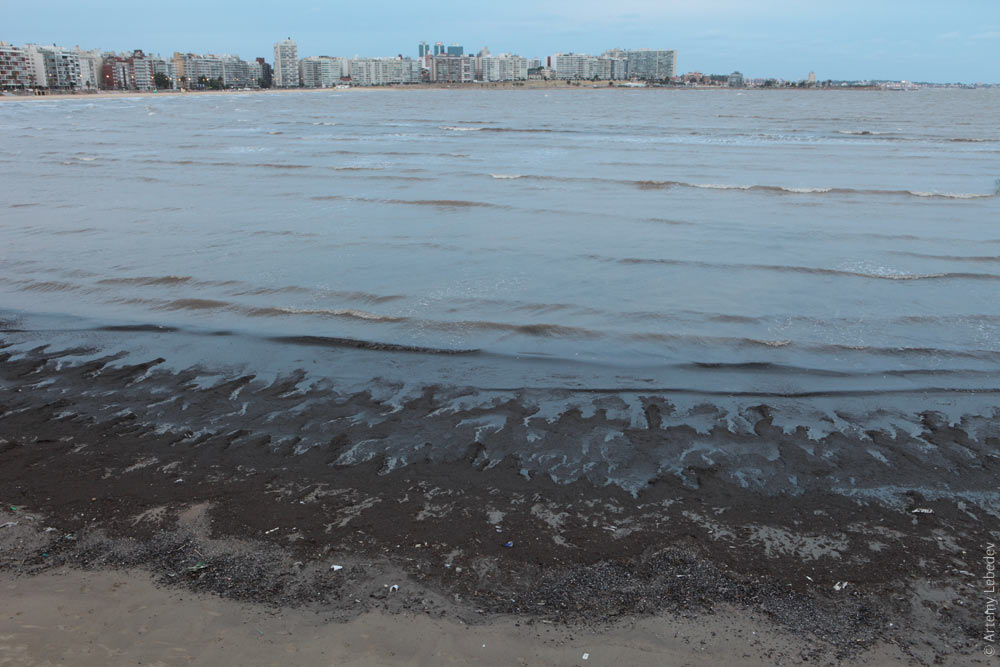 Many street lights have additional sections which display animations when the light is red. Once the light turns green, the screens go blank so as not to distract drivers. (Similar displays exist in Dnipropetrovsk.) 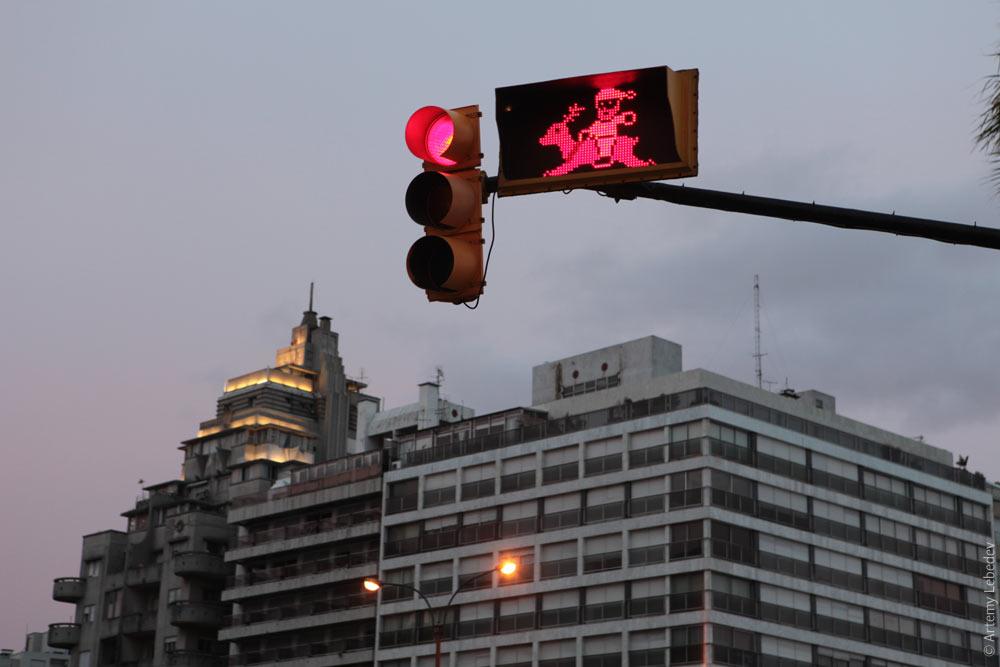 I chose a meat restaurant on the Armenia Waterfront to celebrate the stroke of midnight. There’s a very large Armenian population here. An hour before midnight, I asked the concierge to call me a taxi, but he had no luck. All the taxi companies had the same message on their answering machines: “We also have families and children, and we also love New Year’s, so we won’t resume working until at least 2 a.m.”
Then I simply went out into the street and flagged down a regular cab. They’re ridiculously cheap here. Something like three dollars for a 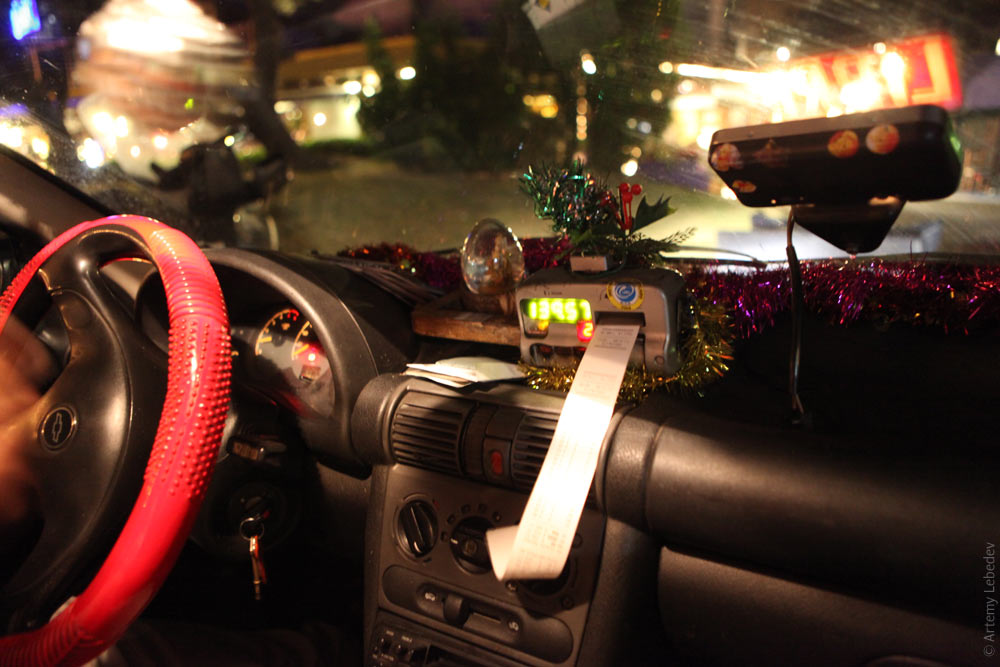 2009 had arrived. Fireworks exploded in the sky. The server brought me mind-blowing chicken heart kebabs. Colonia del SacramentoMapA bus runs from Montevideo to the city of Colonia, originally founded by the Portuguese. There are magnificent trash cans made from repurposed fuel barrels here. 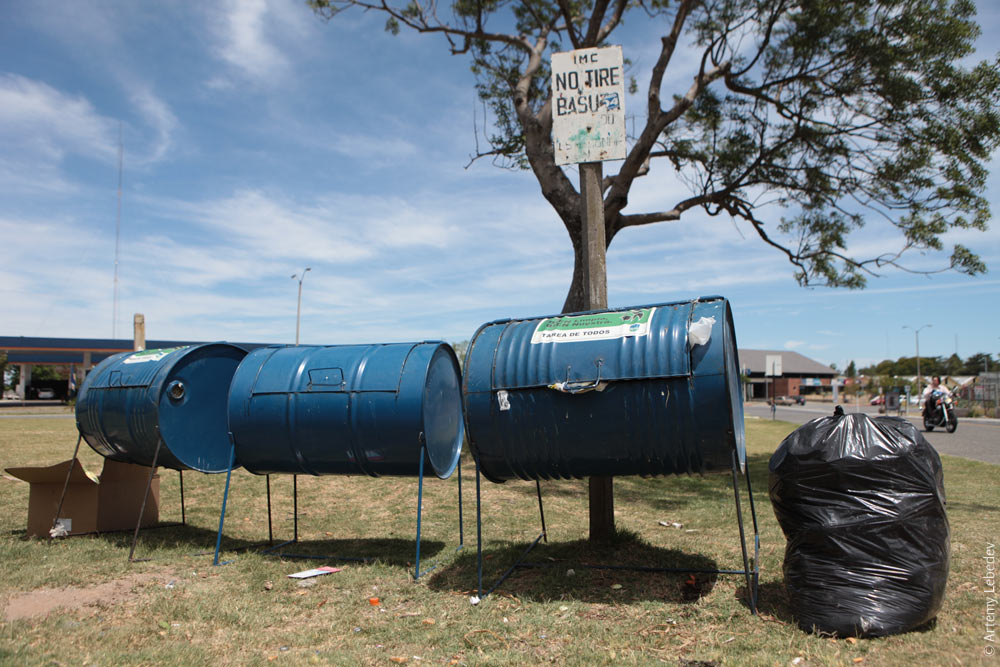 The city is most renowned for its historic quarter, which was even added to the list of UNESCO World Heritage Sites. But it must be said that it’s one of the most boring world heritages.  You walk around and completely fail to understand why so many people flock here. 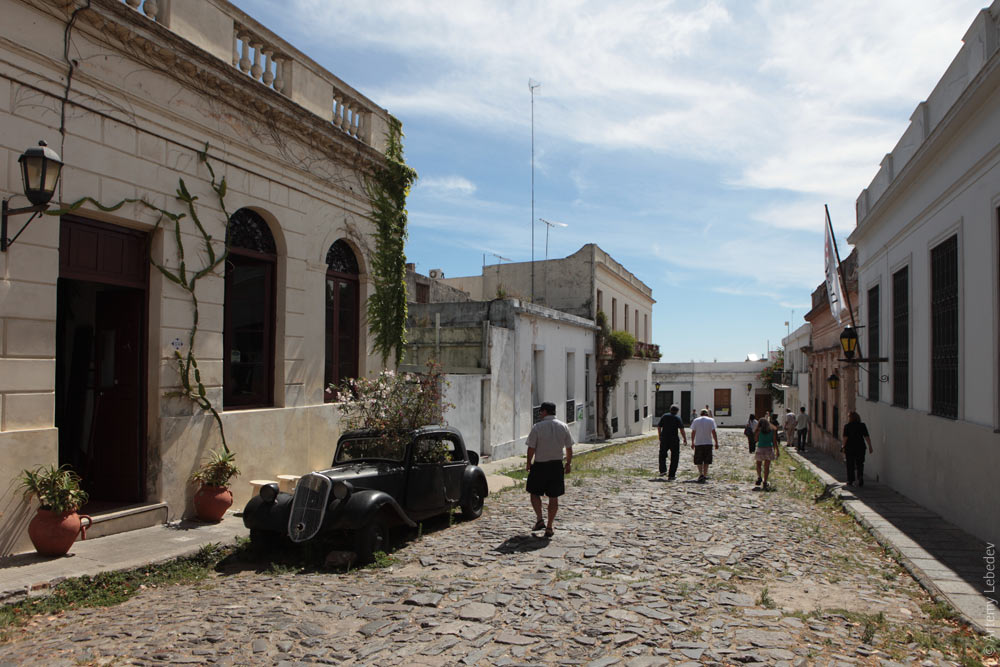 Because so much effort is put into preserving this area, all the traffic signs have been encased in hideous yellow frames, which ruin all the colonial architecture for a mile around them. 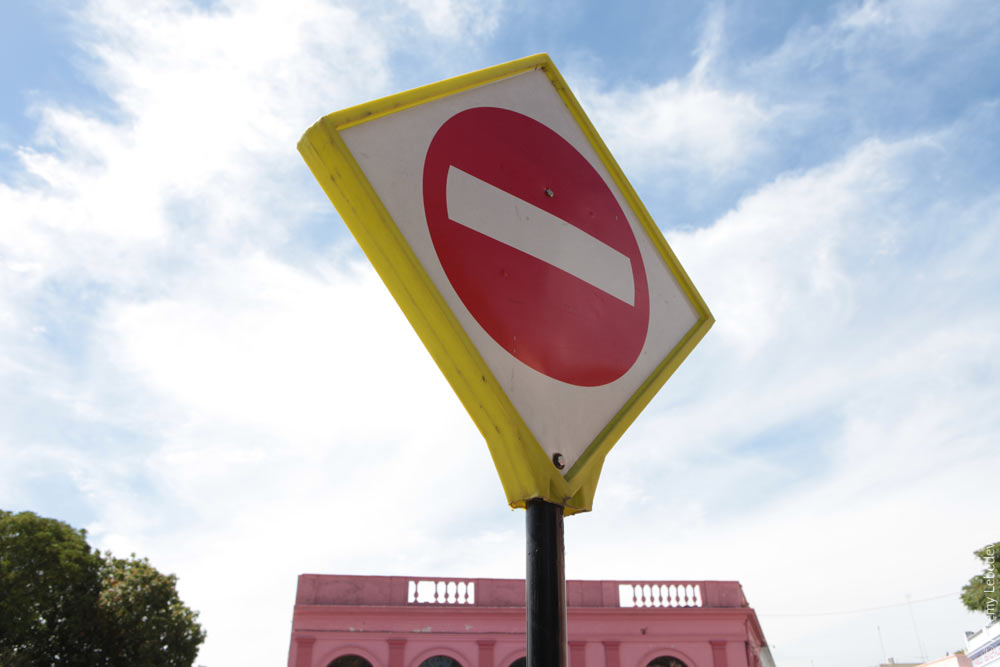 After a long search, I was able to locate a post office. The problem is that postal service is practically nonexistent in Uruguay (just like in Venezuela). People use a system of PO boxes at the post office (like in Mongolia). 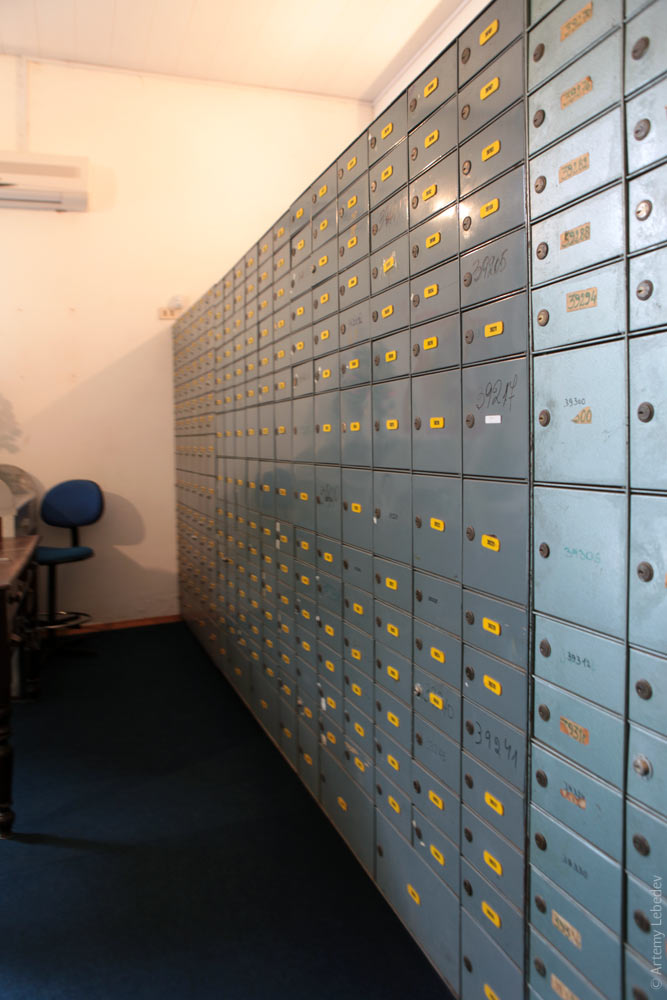 Mailboxes (which look very similar to the Venezuelan ones) can be found only at pharmacies. Who would have thought. 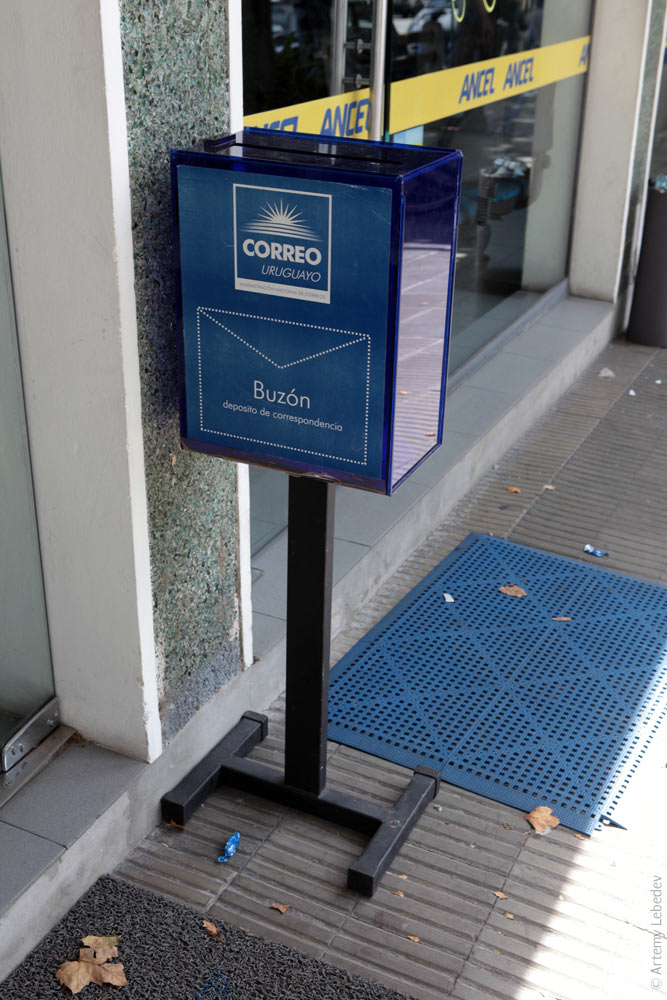 And yet look at what beautiful mailboxes existed here a mere century ago—mmm... But now they’re completely sealed shut. (Compare to the mailbox in Napier.) 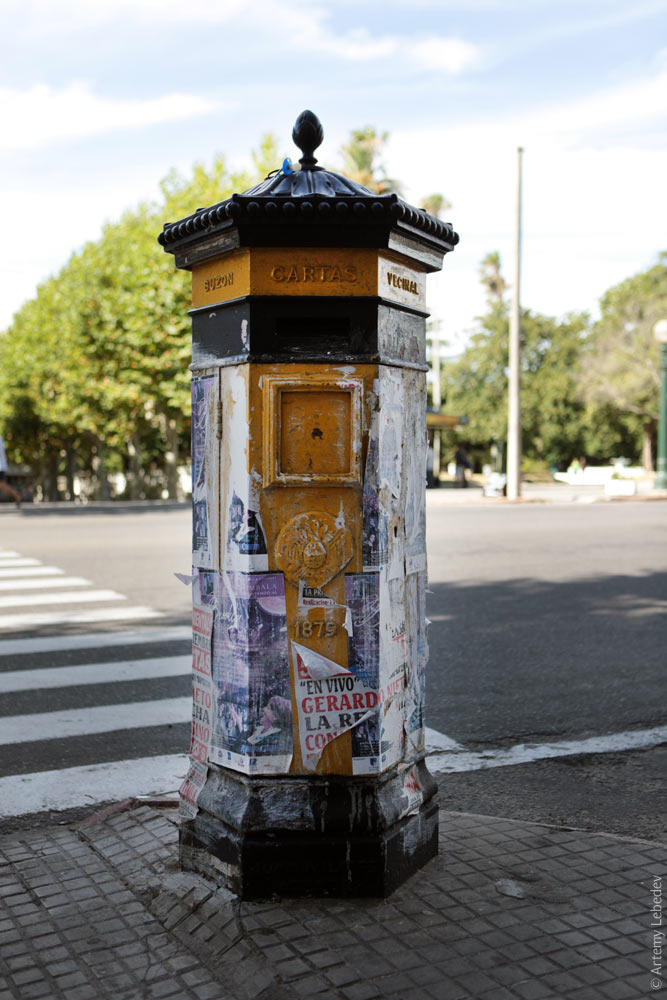 There’s a ferry from Colonia to Buenos Aires that gets you there in an hour. |